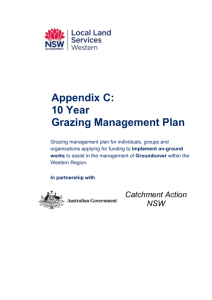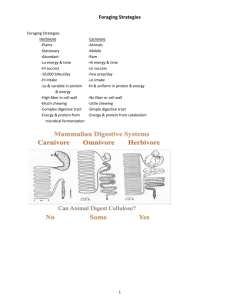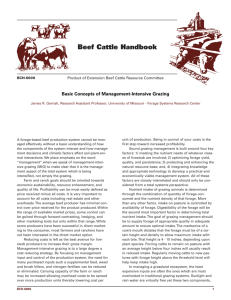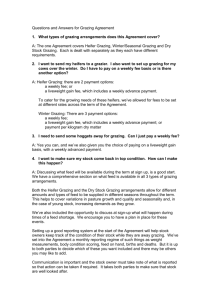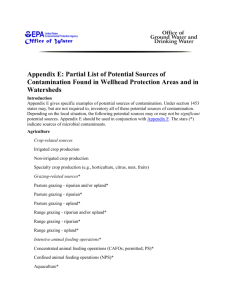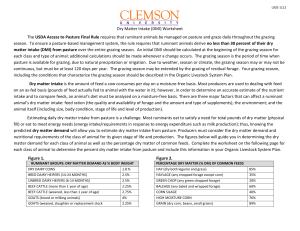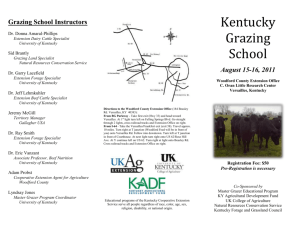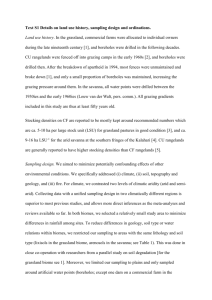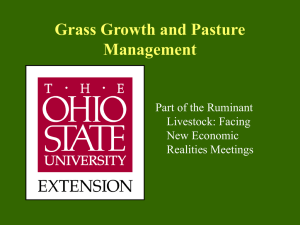Grazing Distribution
advertisement
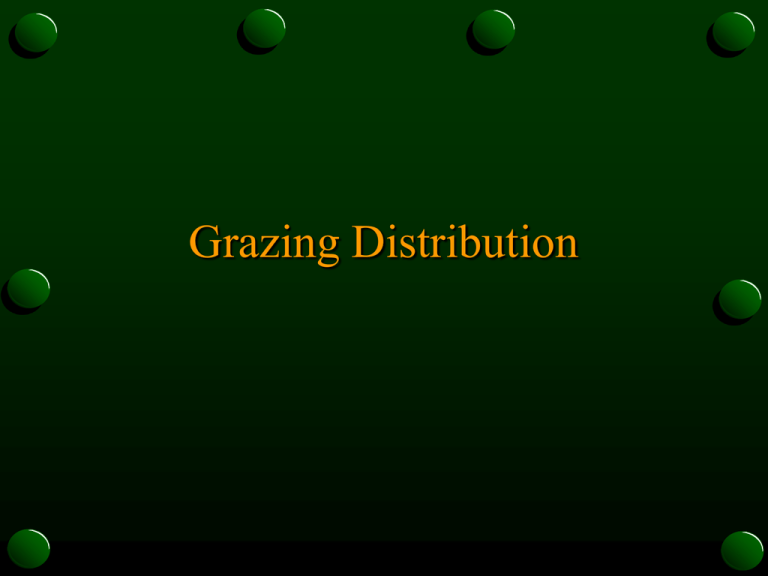
Grazing Distribution What is Grazing Distribution? Pattern created by livestock grazing an area of rangeland or pasture animals tend to graze in spotty patterns forage availability is reduced grazing selectivity is lost reduced animal performance What causes uneven grazing patterns? Pasture shape “L” Terrain Water Location Vegetation palatability stage of growth water content of plants soil fertility level Managing for Grazing Distribution Salt & Mineral Feeder Location placed away from water may need to move when trampling begins Oilers, Rubbing Posts, or Dust Bags attract Winter livestock Feeding Location (move around) Managing for Grazing Distribution Riparian Areas provide (streams, lakes etc) alternate water and salt away from riparian area may need to fence off area Prescribed Burning -livestock prefer regrowth after burning Water Developments Quantity & Quality are most important Cattle consume up to 15 gal per day per 1,000 lbs animal Stock Ponds - can have poor water quality silting animals Pit walking in Ponds (Dugouts) Wells - should have 2-3 day storage Water Developments Windmills high initial cost unreliable as a continual source of power Electric Pumps can pump water to several locations, long distances requires electrical source requires constant monitoring (power outages) Solar-Powered can Pumps move solar panel & pump to different locations requires constant monitoring Water Developments Pipelines and Troughs can be placed at the best locations multiple waterings initial cost & maintenance Spring Developments provides clean water away from wet areas with continuous flow, water seldom freezes Stock Tanks should provide 2-3 days reserve concrete pad Cross Fencing Dividing large pastures into smaller ones Conventional materials (barbed wire) High Tensile Steel - more maintenance High Energy - Low Impedance cheaper than barbed Grazing Strategies Influence grazing patterns Season-Long Grazing One pasture for the entire season Difficult to maintain adequate grazing distribution Management-Intensive Grazing Systems Sequential Forage Grazing Using 2 or more forages in combination best utilization of forage must have different growing seasons Partial-season Grazing Only allowed to graze for part of the growing season Deferred Grazing Rest pasture during season of growth, grazed or hayed during dormant time poor quality forage cheaper than haying Rotation Grazing Move livestock from pasture to pasture Only graze each pasture once per season Rapid Rotation Fewer than 6 pastures short grazing periods, long rest periods Cell Grazing Intensified rapid rotation more than 6 pastures Which grazing system if for YOU? Things to consider: water fencing animal time nutrition

